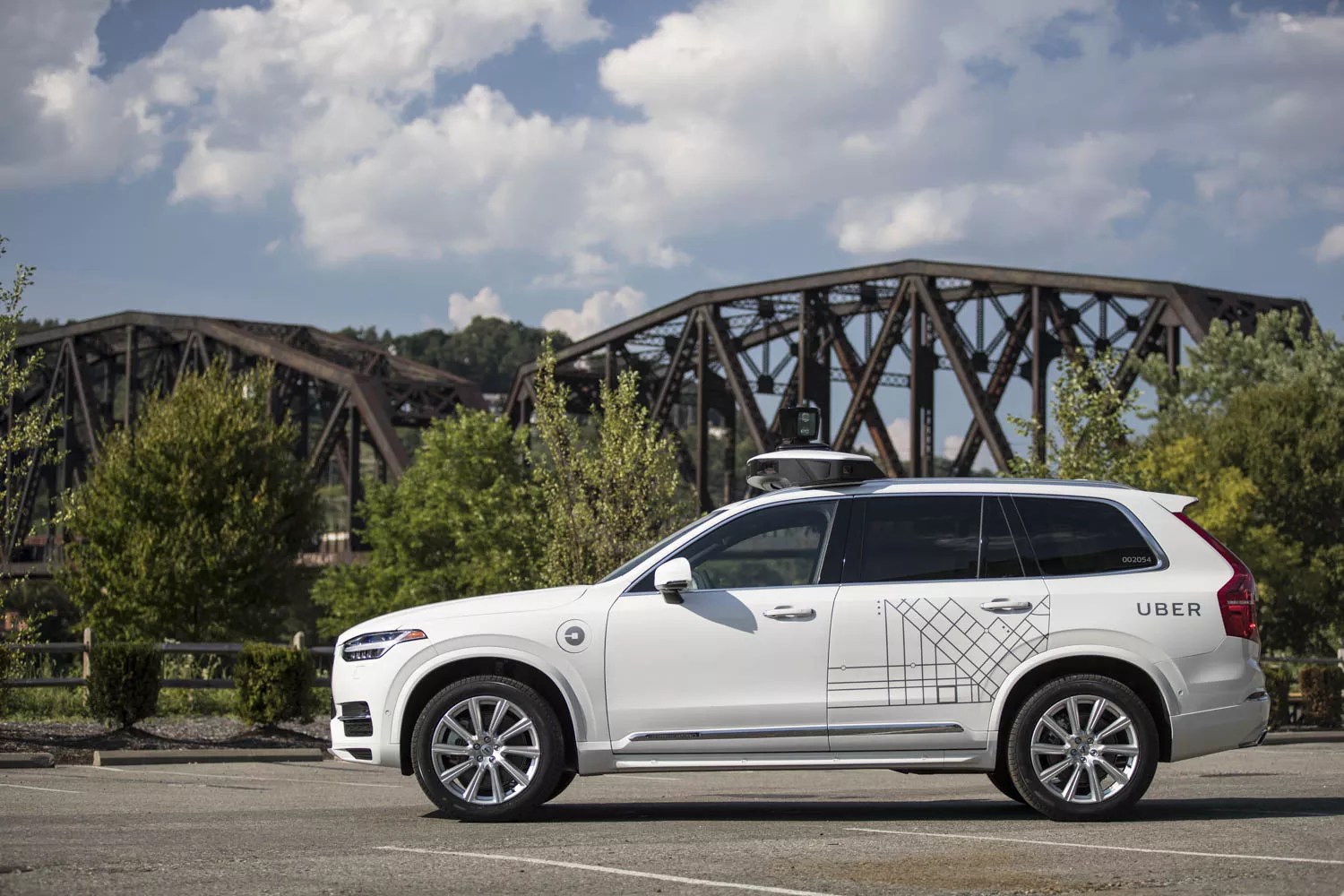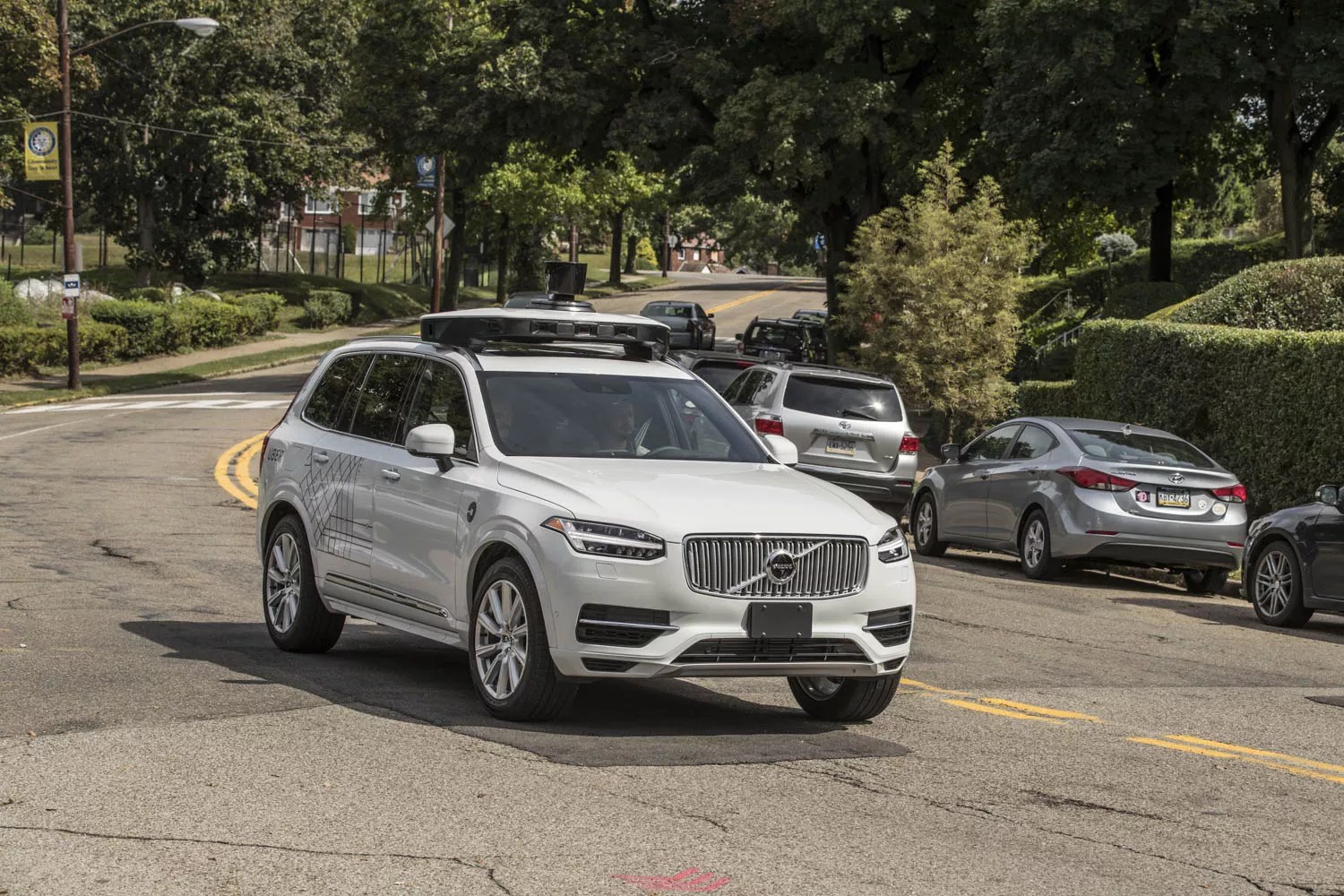
courtesy Uber

Audio By Carbonatix
Ahead of its self-driving car launch in Dallas, Uber held a town hall-style meeting at its new Deep Ellum headquarters. The company’s CEO of advanced technologies, Eric Meyhofer, presented lofty plans for the program and answered questions.
Listeners were guided through a heavily curated experience complete with ribbon wrist bands, waiters and refreshments, and nearly 360-degree views from a concrete-floor room in the company’s partially completed building. Upon arrival, guests were escorted upstairs in groups of 10, and during the event, anyone who strayed too far from the group was met by an employee and steered back toward the assembled people, the exit or the restrooms.
In front of a display of blue light panels, Meyhofer told the assembled crowd that in November, two Volvo SUVs equipped with LiDAR laser sensor technology and two Uber technicians per vehicle will begin driving Dallas streets to map them.
This year, make your gift count –
Invest in local news that matters.
Our work is funded by readers like you who make voluntary gifts because they value our work and want to see it continue. Make a contribution today to help us reach our $30,000 goal!
Once the cars have driven every Dallas street, probably more than once, and created maps, Uber will build a simulator model based on gathered information about Dallas, and cars will go through a testing phase to make sure the cars behave as expected in the simulation. Then cars will pass tests on the company’s Pittsburgh test track. After that, the two cars will drive on Dallas roads, but only with the technicians in the cars. Even with a backup human being pilot in the driver’s seat, fully autonomous function is still a long way off, Meyhofer said.

Uber’s self-driving cars have a LiDAR laser sensor system on top that allows them to assess the surroundings.
courtesy Uber
Meyhofer spent a lot of time outlining safety precautions the company plans to take to avoid another fatal crash like the one with an Uber self-driving car in Tempe, Arizona, last year. He assured the audience that these cars would not drive in inclement weather and only during daylight hours and will start out driving on the easiest routes in the city.
“If our products are not safe, then we don’t have a product,” he said.
The cars are programmed to assess their surroundings and make a plan for behavior 10 times a second and eight seconds into the future.
Throughout his presentation, Meyhofer emphasized an interest in community input and support, a sentiment very much contrary to the stealthy way the company launched its ride-share service in most cities, including Dallas.
“It doesn’t work if you don’t want it,” he said.
Members of the public who attended the meeting and submitted comments online asked about safety, accountability and jobs — both those Uber would bring, and those that might be lost to the cars.
Meyhofer responded that safety is such a priority that Uber plans to share its safety developments and protocols with the city and other companies. Over the next few years, the company will hire about 3,000 employees in Dallas, a couple of hundred of those in the coming months. It does not plan to move major engineering operations here, but will hire across several disciplines.
As with its other services — ride share, scooters and bikes — Meyhofer said the company does not want to replace already existent transportation services.
“Uber is just trying to be the connective tissue,” he said.
While plans are moving forward, questions remain about how soon the technology will be able to live up to Uber’s goals, which Meyhofer acknowledged. Kinks like what home base the cars will return to, how to ensure passenger safety and what to do if the car is in an accident still need to be worked out.
As reported by Automobile Magazine, the technology behind Uber’s cars and other unmanned vehicles still has a ways to go. What’s more, according to a recent University of Washington study, most Americans would still rather drive themselves than trust their lives to an autonomous vehicle.